Due to the number of examples listed, please click here for the overview of this page or read on.
Natif is the conceptualization of rhythmic patterns, chords and progressions based on the movements and intervals of the “vaksin” that are authentic to Haitian music. Natif is not and ought not to be analyzed only from a western comprehensive approach of music. The evolution of collective intuition, such an ultra-sensorial component of human nature linked to supreme and ethereal sources, acquired during thousands of years by the Black civilization cannot be grasped solely by the cognitive criteria of such a new entity known as the western civilization. Having said so, new elements can and must be added to known conventions in order to define our music as precisely as it must be for proper execution and interpretation.
It is the ultimate responsibility of an innovator to codify all elements of his or her creation. Let me say that this conceptualization should have been the works of a team although it could have been inspired by one person at the beginning. But, repeated pleas for collaboration near my Haitian peers have fallen into deaf ears. Consequently, limited illustrations will be explored and presented by your humble servant but as any sphere of creation, possibilities are endless and evolution reigns unquestionably and unavoidably for nothing is static.
These are the fundamentals of our music.
It is:
1. Poly-rhythmic
2. Based on calls and responses
3. Frequent use of micro-tones by the singers
4. Syncopated
5. Dissonant
6. Percussive
7. Strongly flavored with the pentatonic scale—major or minor
8. Atonal when it comes to “Enkantasyon” or “Chants”.
9. Very repetitive except for “Enkantasyon” or “Chants”, and *monologues
10. With more than 60 beats, almost each beat comes with its own melodic development
*By monologues, we mean songs that are sung by a lead singer with no emphasis at all on the calls and responses aspect of our traditional music. One example is “Ba Kristyan Chèz Pou We.”
Je vouze mande
Si w wè Kristyan
Pase pou we
Ba li chèz chita
Jalouzi pa lapòt, anye
Ala lite Kristyan lite
Pou konbat lamizè
Ala lite Krisyan lite
Pou chase lamizè
Men jevouze mande
Si w wè Kristyan
Pase pou we
Ba li chèz chita
Jalouzi pa lapòt, anye
Those traits will be found in the “natif” concept.
a)
Chordal approach to the “vaksin”
One of the major characteristics in the use of the vaksin lays in the fact that it is being played independently of the tonality of the singer. Consequently, one must expect that some rhythmic patterns reflect such an occurrence by using what I call a “chordal grouping”—a set of chords played within one bar at least in order to create a rhythmic pattern.
In order to see the scores clearly, click on them and you may enlarge as you please.
Here is one example:
As one can see, the melody is being played on Bmi flavored with a D major pentatonic. We have also shown above the substitutions made possible by the “natif” concept for I, IV, VII, vm chords in this song.
Similar rhythmic patterns can be seen as musical formulas which one can apply to some melodic developments. This approach remains more intuitive than cognitive. The Blacks did not write down the complexity of the polyrhythmic aspect of their music. It has been passed on based on that collective intuition that is fueling traditions. The use of western instruments while basic concepts of harmony must be followed should embrace that collective intuition. Our sensibility is more acute, we have more to convey in much broader and specific ways.
b)
“Fonde” is another example of this chordal approach to the “vaksin”
The use of such chords over this melody is rather intriguing and does not quite comply with the notion of close relation between chords and melody as established by western music. This allows us also to introduce a new term in Haitian music:
“Konpozant” can be defined as a group of chords in one bar or measure that sounds like one when played together.
The first 3 chords below– Arpegio E-G-C is the Chord of C; The first triad is B minor and the second one E minor. It should be seen as a “konpozant” though I have identified the C and the B minor as a Cmaj9♭5.
c)
With the next song entitled “Na Tchatcha”, it is getting a little bit unconventional. Remember that Natif is based on the movements and intervals of the “vaksin.” In some rhythmic patterns where they are strong and prevalent, how are we going to emphasize the notes that reproduce them especially when they represent low frequencies or bass notes? The reason I’m asking this is because conventionally one can only have one note on a “Slashed chord.” We have decided to have more than one note on the “Slashed chord” so we can mention and emphasize the notes played by the “vaksin” in this specific chord.
Notes and Notations on the Slashed Chord
We may need to indicate the movement of the vaksin on the Slashed Chord. This movement can be ascending or descending or mixed—ascending and descending at the same time. We are introducing 3 indicators: < ↑ ↓ to complete those possibilities.
For an ascending movement, no indicator is needed: Am/C,D,E
For a descending movement, “< ” is the indicator-- Em/E "<" B "<" G For a mixed movement within an octave -- Em/G,B,"<" E or Am/C,"<" A,D For an ascending movement greater than octave, “↑” -- Em/D,C,↑C For a descending movement greater than an octave, “↓” -- Em/A,C,↓G not to be confused with Em/A,C,"<" G For a mixed movement greater than an octave Em/C,"<" A,↑D not to confuse with Em/C,"<" A,D
d)
The last song “Na Tchatcha” shows also how it is easy to joggle between the major and minor tonality of the same chord in our music. The next song “Ayizan Nan Lapenn” is another representation of this very interesting element.
e)
The ii, V, I progression has basically “contaminated” the compositions of many of our songwriters of 1920’s and throughout the 1950’s. As a musician myself, I have never done such cover tunes until I came up with the “natif” concept. With all due respect to those very famous musicians who left us such a great legacy, I believe that many of those songs do not convey this acute sensibility of our Haitian collective soul. Case and point—I have never heard a peasant sing “Ayiti Cheri” or Panama MwenTonbe” or “Lasirèn Labalèn” or “Choucoune”. Troubadours playing in the cities would sing them, but I have never heard any in “Anba tonèl.”
“Panama Mwen Tonbe” and “Lasirèn Labalèn” are listed on my book “Kantik Natif, Volim I.” I’m posting “Ayiti Cheri” in order to show the substitutions I use in this song.
f)
Sometimes, it is possible to create progressions that sustain tensions throughout a melody. I call this system “camouflage”—chords built with 4th interval notes that open tremendous possibilities for substitutions. “Vive Haïti” written and sung by Lumane Casimir is a perfect example where I use it as substitutions for the ii,V, I progression played in this song. On my guitar, these are usually 5 or 6 notes barred chords, those notes played all vertically one below one another with one 3rd interval note on the 5th or B string.
This passage from the previous “Natif” page is totally relevant to this approach:
Among the endemic elements of Natif music is the omission of the 3rd degree of a chord; the addition of a sharp 9 to a major chord; the coexistence of both the fifth and its flat within a chord, the use of inversions and substitutions using different notes from the root, the 3rd or the 5th on bass. Suffice to say that Natif music answers to a novel harmonic conceptualization.
Full arrangement of this song where I play the same chords can be heard on this link:
http://www.soundcloud.com/simid-1/
I must add that the “camouflage” system was widely used in my book “Kantik Natif, Volim I” and “Pyè Aleman Lèmiso Batala”, one of my favorite songs, is a perfect illustration which you can appreciate by watching this clip below:
g)
About team work
Before I continue further, I would like to open a small window in order to make a few valuable points. The American jazz movement started from a concept that was based on improvisations which themselves could be formulated from seven modes, except obviously for non-pitched percussion. The Afro-Cuban jazz movement embraced the same movement but put a lot of emphasis on a rhythmic approach overall and the piano became the instrument of predilection with the new “Latin fingering”. The Brazilian Jazz movement came up with a very sophisticated chords and progressions approach and a new beat called Bossa Nova. A lot of emphasis was put on the guitar.
The Natif concept is being developed on the guitar. But, I hope that my fellow musicians will contribute also to it in order to include other instruments. Improvisations are not to be defined and restricted by modes but they must flow from keys to keys and from scales to scales with an essentially unapologetic, uncontrollable and unrestricted sense of freedom in totally defiance for known conventions.
In a lighter note, I would add that the “vaksin” is played only in Rara music not in voodoo music as played in the humfò during the ceremonies. However, we have extended his role in our concept to voodoo, roots and folk music under the “natif” umbrella.
h)
Moving vaksin over a chord or triad pedal—The vaksin keeps moving but the chord remains the same.
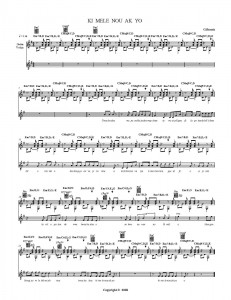
g) ♭5 in “Rara” music and the “Natif” concept
When reading a little bit about musicology, I was surprised to find out that the ♭5 was banned by the Catholic Church because they have declared it devilish. This ♭5 is widely hit by the vaksin in “Rara” music. It might have been also one of the reasons why they went after voodoo with such a bloody toughness. In the next song, this attenuation of the 5th sounds very interesting.
i)
This tune of Emerante de Pradines is the typical example why I believe strongly and honestly that the musical expressions of our feelings were spoiled by western musical influence.
It is being played on the key of C minor in the original version which can be seen on Youtube below:
The iv chord is the next chord that is played with a strong emphasis. Though it is not a wrong chord, the Bb minor conveys much more our feelings and this ties us to Brazilian music where we do find also this Minor 7th chord to Minor I chord progression. Moreover, the Natif concept emphasizes also the Minor 7th chord while reproducing the vaksin intervals at the same time.
Here are the scores as suggested by the Natif concept:
Lègba N a Konsole
j)
Subtle structure and modulation
Though repetitive and very short and this is one particular aspect of Haitian folk music, most melodies present some very interesting approach of songwriting. In my effort to codify the “natif” concept, it is very important to me to think musically as a Haitian peasant, to let my inspirations, wherever they may come from, to take me to those places where they defy conventions and rules. This exhilarating sense of freedom prevents me from putting those inspirations in a context where scholars should enjoy their comfort zone. Possibilities are endless, indeed.
This song is a perfect example.
k)
Another good example of “Konpozant.”
The choice of those chords creates a close harmony and a “pedal illusion.” Since the “natif” concept evolves around the movement and intervals of the “vaksin”, our interpretation of the chords will follow that approach. The “E” and “A” notes are pretty constant. The “G” and “B” are in fact part of the “G-B-E” triad. I have omitted the ‘E” in order to have more bottom, create a better percussive effect and emphasize more the high notes of the phrasing.
l)
Fooling around with the “sus4”
While the ♯9 commonly used with a major key opens a small window to improvise on a minor scale, the “sus4” seems to reinforce both the major and minor keys. Maybe, this is why I feel such an affiliation to it. The melody determines the major or minor key, but the use of “sus4,” while it is not making the tonality of the melody irrelevant, reinforces it without any emphasis. I also believe that the “sus4” brings a mysterious and ethereal flavor to the progressions used in the “natif’ concept, consequently in Haitian music.
The analysis of the chords of the song below entitled “Si w Te La”, becomes much easier when one includes the tuplet of the last beat of the precedent measure. The “sus4” must not be seen as the 1st since the first 3 notes A-G-F of the melody suggest clearly either the F major key or its minor vi chord which, in this case, is the key of that melody.
The “natif” concept evolves around the movement and intervals of the “vaksin.” The consistency of the “A” and “E” notes on the bass is a strong reminder of that. As one can see, the “A” remains the 5th for the Dmi9 and the “E” is the 9th. But, the former becomes the 6th or 13th for the C9 and the latter the 3rd.
But, it will be good to note that the B♭6 is the only chord immune from the “sus4.”
m)
The V, IV, I, i progression
This song below presents once again some very interesting aspect of Haitian music. Was the choice of the key a conventional or accommodating one? The IV chord is a major chord. Without evoking the “Blues convention” where a major 4 chord can be found in a minor key progression, to write this song in a major key is totally appropriate. However, what I find interesting is the fact that IV chord imposes itself despite of the presence of the 4th (the F note) and the 7th degree (the A♯) in the melodic lines in that measure, contrarily to the strong suggestion of a minor iv chord in western music.
Moreover, some may say that the use of the major I chord is simply sentimental. But, in fact, it reinforces the fact that this song is in a major key and the minor 3rd of the melody at the beginning of the song is a just a nuance that reflects the sensibility of the Haitian collective soul in music.
But, my greatest surprise in writing this song was not the progression since I know that the “natif” concept has opened a new window in compositions, especially in the relations between melodies or themes and chords.It was the microtone of the A![]() (3/4 note) which I have highlighted. Again, this endemic element of Haitian music is present in this song.
(3/4 note) which I have highlighted. Again, this endemic element of Haitian music is present in this song.
n)
Chordal formula
When I first started feeling that I was getting somewhere with the “natif” concept, this notion of “chordal formula” stroked me as a valid and tangible way to describe this “test of stylization of Haitian music” as noted by Professor and musicologist Claude Dauphin.
In the song below, the 3rd chord in the 3rd bar when playing the melody, must not be seen as E Major ♯9, but rather as the 3rd and the Major 7th of the A chord. Again for the Emi7 seen as the ii minor chord in Western music, the “natif” concept just discounts it and still emphasizes the 3rd and the Major 7th of the A chord. This all makes sense when one knows that the musician who plays the “vaksin” blows one, two or three intervals at the maximum, and does so more intuitively than knowledgeably.
o)
Romancing the 7th
Possibilities are just endless! Finding new ways to hear chords and progressions not necessarily from conventions of western music widens the horizons of musical expressions. The “natif” concept offers such a platform on which music can be understood from other aural perspectives.
This song below is again one way to use chords from the movement and intervals of the “vaksin”, among which evolves the “natif” concept. Please, click below in order to view the scores.
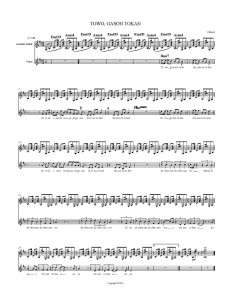
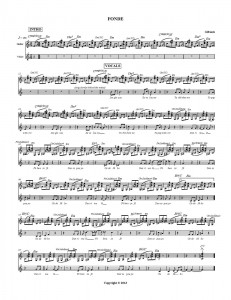
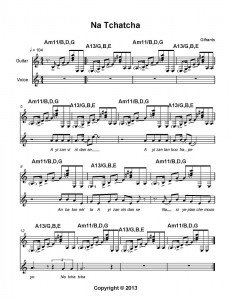

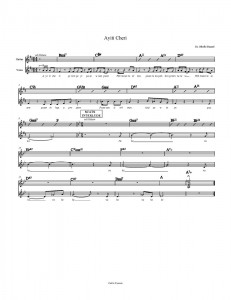
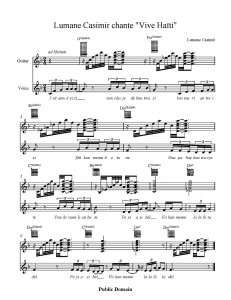

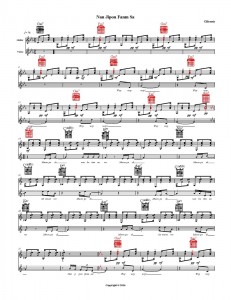
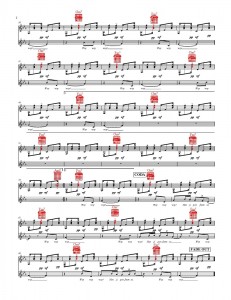

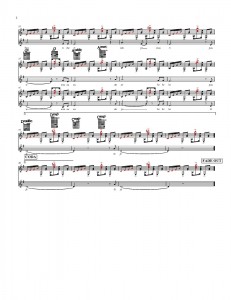
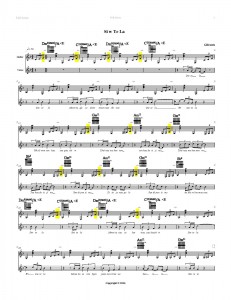
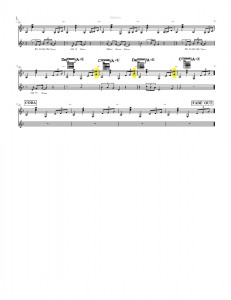
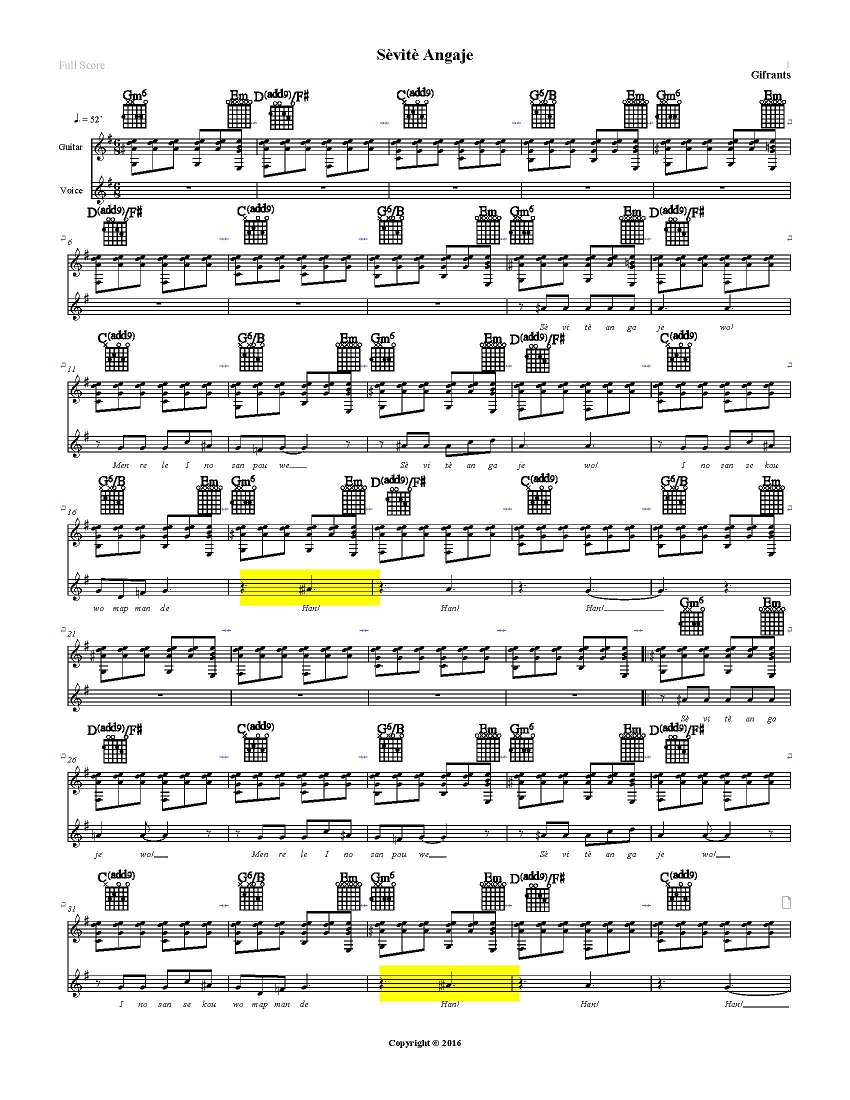
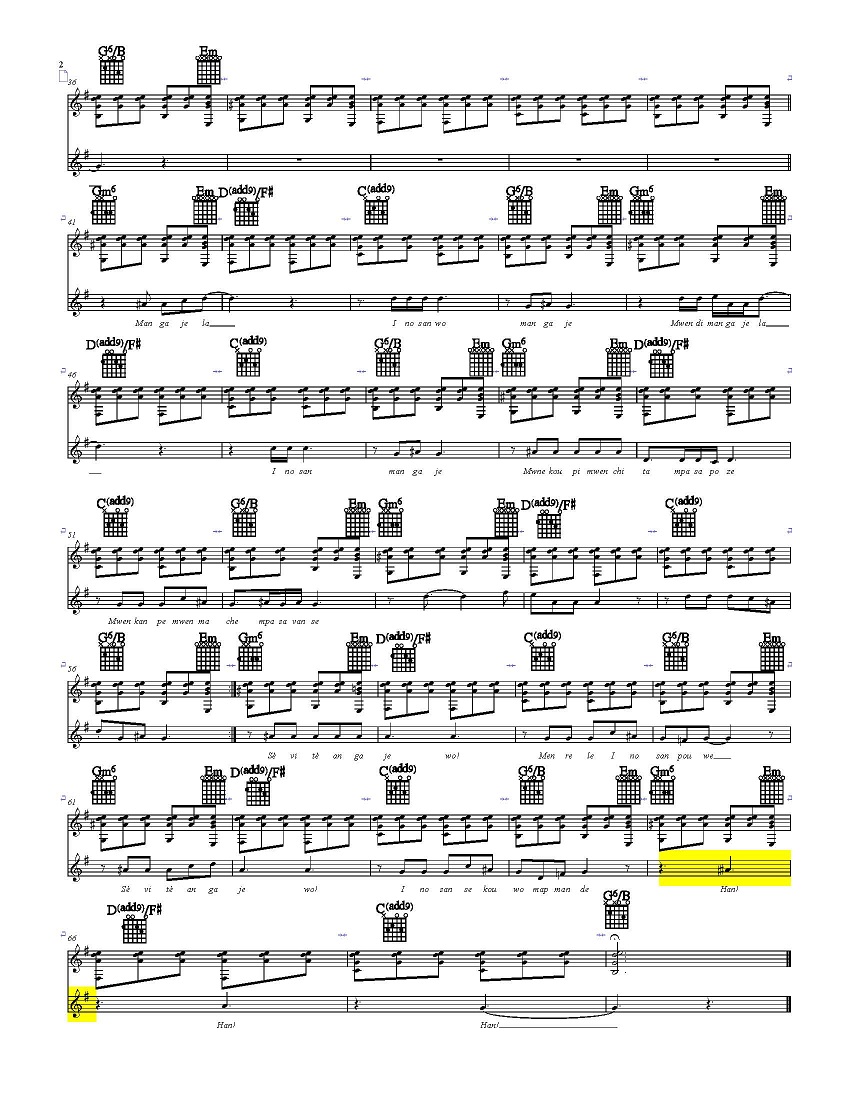
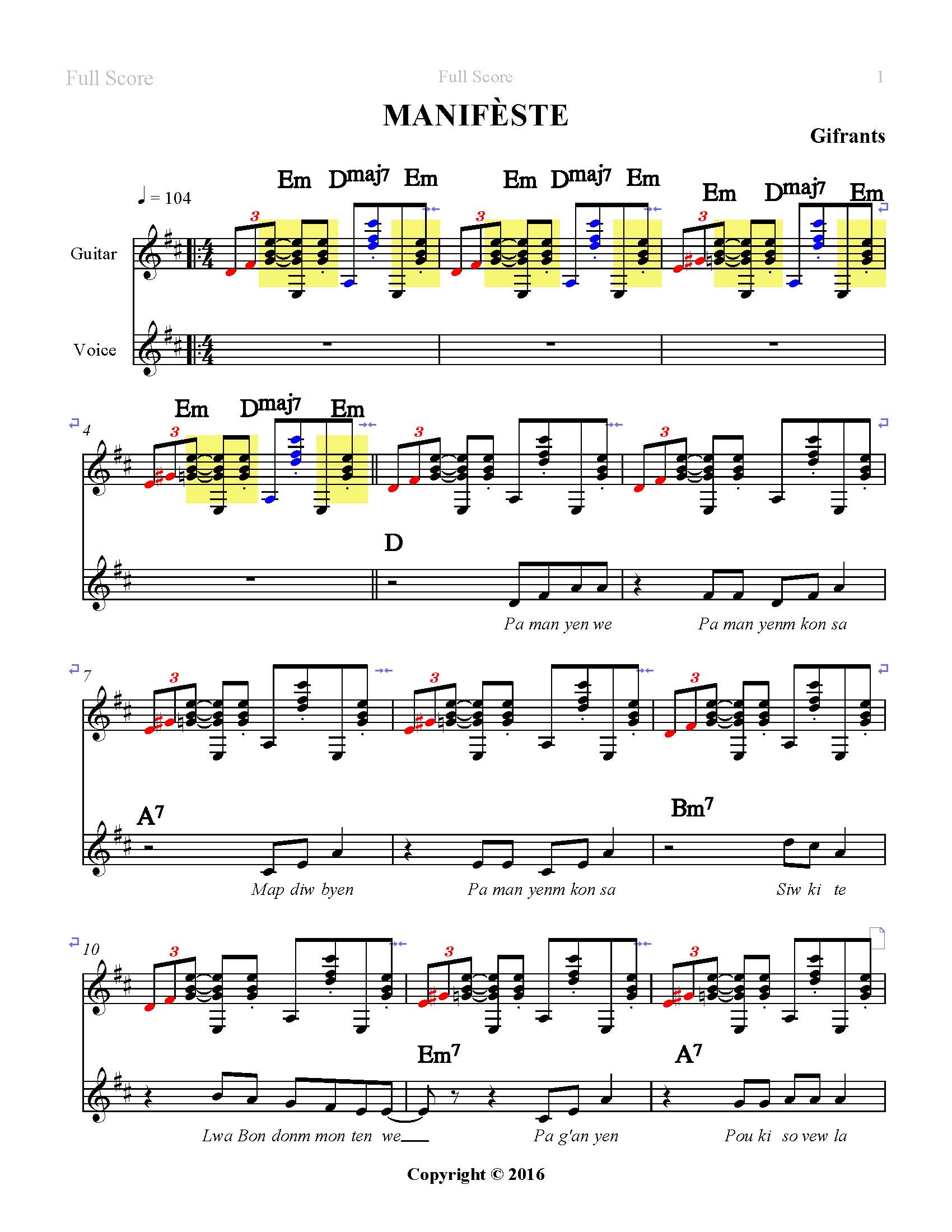


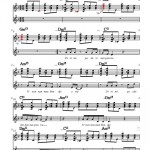

2 Responses to What is Natif?